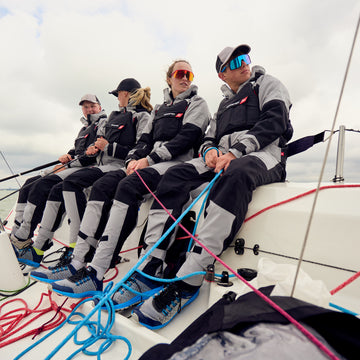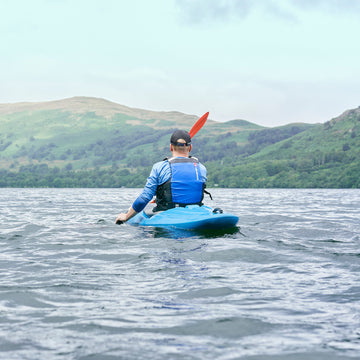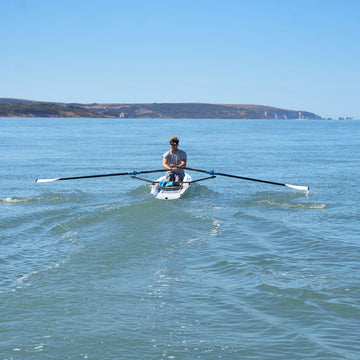How you recover your boat safely with an onshore breeze depends on the type of boat you sail. As a Stokes Bay sailor, I had to quickly learn the 'Coming Ashore in an Onshore Breeze NVQ' in my Laser and more recently I have been discussing with the expert Skiff sailors how they handle coming ashore with their perhaps slightly more fragile skiffs as we still feel we have to work on our technique in our Rooster 4000 to pass that NVQ when it is significantly windy.
The key to a successful recovery, whatever the boat, is to remove all power from the sails and point the bow at the beach. Removing all power from the sails and point the bow at the beach can be harder in some boats than others. In big waves attempting to turn the boat towards the wind is not viable as recovery backwards onto a trolley is near impossible and at the point of turning towards the wind you are very venerable to capsizing, which sadly can cost In a laser - we tend to drop the knot in the mainsheet so that the sail can flutter in front of the bow. I do this by shooting head to wind, perhaps 50 yards upwind from the shore where I intend to land, and grabbing the knot from the outer end of the boom. I find it easier to ensure there is plenty of slack in my mainsheet so I am not fighting the knot to come out. You might also take into account the strength of current too when you factor where you put yourself. Once the knot is in my hand, I can drift for a while to check my calculations were correct before finally dropping the knot and taking the rest of the sheet into my boat. At this stage there is no rush to remove the centreboard or rudder as these act as general guidance, keeping the boat in course to my intended recovery position. Meanwhile I untie my kicker line from the handle on my centreboard and the retaining elastic so I am now free to pull the daggerboard up at an instant. I leave the rudder and tiller fully down and tied on. You might think this is daft as I might ground. At the point of near touching, I jump out of the back of the boat and grab the transom by the traveller rope. As the laser® rudder is so short, if I am up to my waist, I can easily keep the rudder off the ground whilst I push the retainer and remove it fully from the boat. In big wave this is the safest way for the rudder too - as if it is raised it is more venerable in waves.
When the conditions are very harsh I drop off the back of the boat to act as a sea brake whist hanging onto the traveller rope. Hopefully a friendly sailor can throw my trolley into the water wheels first so I can push my boat quickly out of the surf. If however, as was the case at the weekend, that I am the first ashore with no shoreside help, then to save the underside of my boat, I will capsize it and push it up the beach on its gunwale.

How to Recover Your Boat With an Onshore Breeze
Drop the Knot - in a laser®
When you can't let your sail in front of the boat - then you have some sails to drop: The Skiff fleet at Stokes Bay all drop their sails along way off shore, then roll them from the head and tie a mainsheet round the rolled sail and the boom. The rest is pretty similar to the Laser®. I was also advised to drop the knot of the jib sheet of the Rooster® 4000 as well as roll the main. I imagine that in dropping the jib knot early, you have less to try and make the boat bear away when you are trying to pull down the mainsail and rolling it, which might be a significant help. We are psyching ourselves up for a windy onshore to test out our 'drop the knot' techniques in the 4000. Whatever happens there are usually lots of highly experienced sailors who are happy to save your bacon if it all goes peak tong!










 Select Store
Select Store
 EU
EU
 US
US
